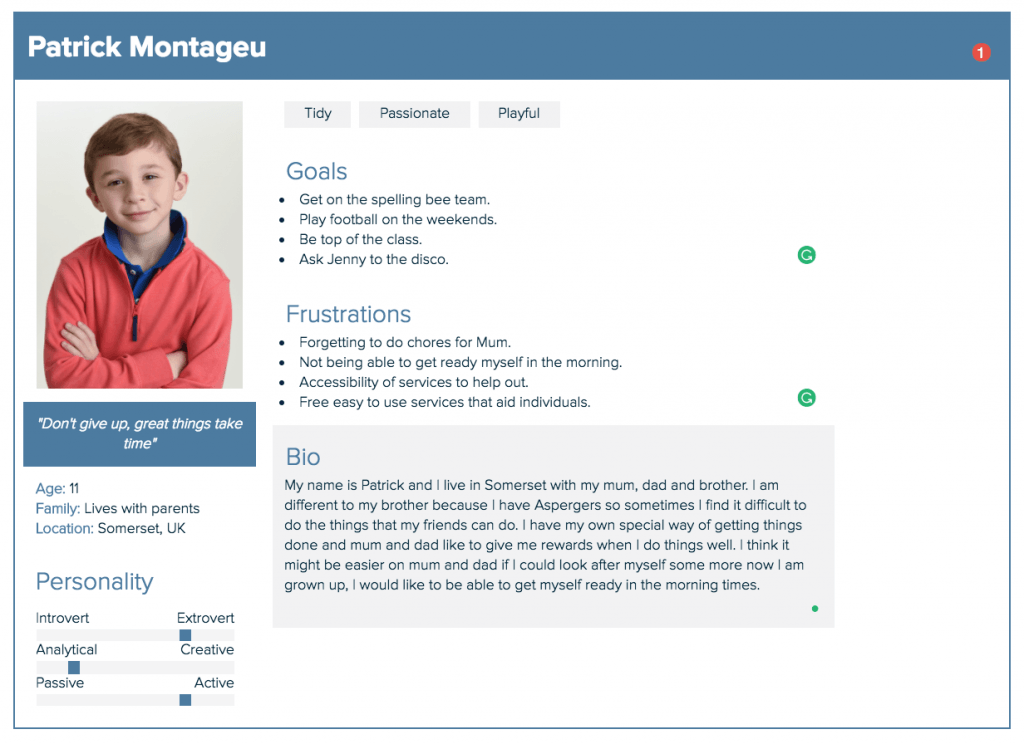In terms of audience, I want to ensure that my media product is widely accessible to a larger range of ages and abilities. In order to make this possible I want to include customisable features and an option to set and monitor your own tasks. For the younger or less able people using this concept, I will include an admin option so that a parent / guardian can monitor and set activities that need completing. Hopefully this means that it will appeal to a larger audience, creating a new option for people who struggle with daily tasks and giving back people their independence.
I created two personas to use as an example of the variety of individuals I would like this concept to be used by.
Marketing Strategy
Grow Users and Keep the Lights On
Here are five strategies to capitalize on the marketing and distribution of your new app:
- Release early and release often. You may have heard this refrain before, but it’s vital for growing your user base and attracting investors’ attention. Release core features, then leverage communities such as Hacker News and Product Hunt to grab early adopters before building out the kitchen sink. Look at it this way: If you don’t have a user base, how can you be sure you’re building something people want?
- Find your niche. You can differentiate your app in a crowded market in two ways: Introduce features that no one else has, or target a specific niche. These strategies aren’t mutually exclusive. Take QUAD, for instance — yet another entrant in the crowded mobile messaging market. QUAD focused on its unique ability to message more than 50 people and has heavily marketed its app to college groups like fraternities and sororities that have a real need for a bulk messaging system. By doing so, it’s enabled itself to live alongside other messaging juggernauts like WhatsApp and GroupMe, rather than compete with them.
- Be exclusive. Nowadays, it seems like everyone uses Spotify, but it wasn’t long ago that the company was just starting out in the U.S. and only available by invitation. While Spotify used invitations to make it easier to scale in a new country, it also had the added benefit of creating buzz around this exclusive new app. By capitalizing on word-of-mouth marketing, Spotify helped itself stand out in an arena that companies like Rdio and Rhapsody had been occupying for years.
- Optimize for the App Store. Much like the need to optimize your website for search engines, it’s important to make sure your app has the right keywords in its title and description so users can find you. It sounds minor, but if your app doesn’t come up when users type relevant keywords into the search bar, then it might as well not exist. That’s why app design and development companies like Fueled have started making App Store optimization an integral part of their development process.
- Build in social calls to action. Social word of mouth is one of the best ways to grow your user base. Build in social sharing so users can brag about what they’ve just accomplished, whether that’s leveling up in a game or logging miles in a running app.
It’s easy to assume your app can become the next Snapchat as long as you build a solid product, but what makes that app successful isn’t the fact that it exists — it’s the efficiencies it creates. By focusing on marketing strategies alongside product development, you can create an app that not only makes life better for your users, but also makes a profit for your startup.
https://www.forbes.com/sites/theyec/2014/07/18/five-killer-marketing-and-distribution-strategies-for-your-app/#63dc93f211e9

